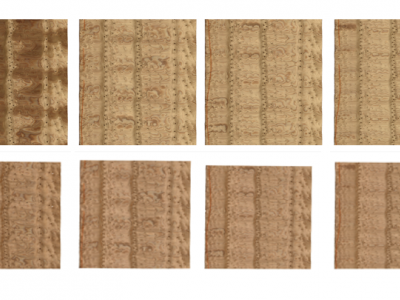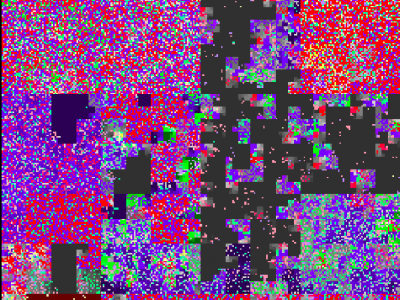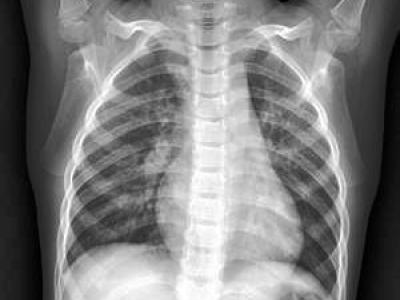Artificial Intelligence
This dataset consists of 2579 image pairs (5158 images in total) of wood veneers before and after drying. The high-resolution .png images (generally over 4000x4000) have a white background. The data has been collected from a real plywood factory. Raute Corporation is acknowledged for making this dataset public. The manufacturing process is well visualized here: https://www.youtube.com/watch?v=tjkIYCEVXko.
- Categories:
 1409 Views
1409 Views
Without publicly available dataset, specifically in handwritten document recognition (HDR), we cannot make a fair and/or reliable comparison between the methods. Considering HDR, Indic script’s document recognition is still in its early stage compared to others such as Roman and Arabic. In this paper, we present a page-level handwritten document image dataset (PHDIndic_11), of 11 official Indic scripts: Bangla, Devanagari, Roman, Urdu, Oriya, Gurumukhi, Gujarati, Tamil, Telugu, Malayalam and Kannada.
- Categories:
 1485 Views
1485 Views
An offline handwritten signature dataset from two most popular scripts in India namely Roman and Devanagari is proposed here.
- Categories:
 1882 Views
1882 Views<p>The dataset comprises 2035 images from 14 different software architectural patterns (100+ images each), viz., Broker, Client Server, Microkernel, Repository, Publisher-Subscriber, Peer-to-Peer, Event Bus, Model View Controller, REST, Layered, Presentation Abstraction Controller, Microservices, and Space-based patterns.</p>
- Categories:
 760 Views
760 ViewsThe simulation code for the paper:
"AoI-Aware Resource Allocation for Platoon-Based C-V2X Networks via Multi-Agent Multi-Task Reinforcement Learning"
The overall architecture of the proposed MARL framework is shown in the figure.
Modified MADDPG: This algorithm trains two critics (different from legacy MADDPG) with the following functionalities:
- Categories:
 1049 Views
1049 ViewsMedical Symptoms are sometimes very tricky to analyse in real time as it takes time for example, first to detect the symptoms then to perform some tests and finally coming to a solution. This process can be eliminated and lot of time can be saved by introducing the concept of Deep learning. CNNs create a network for extracting the features of a given image in order to evaluate the image based on the conditions required. This property of the CNN is used as a certain advantage in order to detect the symptoms based on the type of X-ray images provided.
- Categories:
 2822 Views
2822 Views
The Objects Mosaic Hyperspectral Database contains 10,666 hyperspectral cubes of size 256x256x29 in the 420-700nm spectral range. This original hyperspectral database of real objects was experimentally acquired as described in the paper "SHS-GAN: Synthetic enhancement of a natural hyperspectral database", by J. Hauser, G. Shtendel, A. Zeligman, A. Averbuch, and M. Nathan, in the IEEE Transactions on Computational Imaging.
In addition, the database contains the SHS-GAN algorithm, which enables to generate synthetic database of hyperspectral images.
- Categories:
 521 Views
521 ViewsThe proposed dataset, termed PC-Urban (Urban Point Cloud), is captured with an Ouster LiDAR sensor with 64 channels. The sensor is installed on an SUV that drives through the downtown of Perth, Western Australia (WA), Australia. The dataset comprises over 4.3 billion points captured for 66K sensor frames. The labelled data is organized as registered and raw point cloud frames, where the former has a different number of registered consecutive frames. We provide 25 class labels in the dataset covering 23 million points and 5K instances.
- Categories:
 2580 Views
2580 ViewsArbitrarily falling dices were photographed individually and monochromatically inside an Ulbricht sphere from two fixed perspectives. Overall, 11 dices with edge size 16 mm were used for 2133 falling experiments repeatedly. 5 of these dices were modified manually to have the following anomalies: drilled holes, missing dots, sawing gaps and scratches. All pictures in the uploaded pickle containers have a resolution of 400 times 400 pixels with normalized grey scale floating point values of 0 (black) through 1 (white).
- Categories:
 320 Views
320 Views





